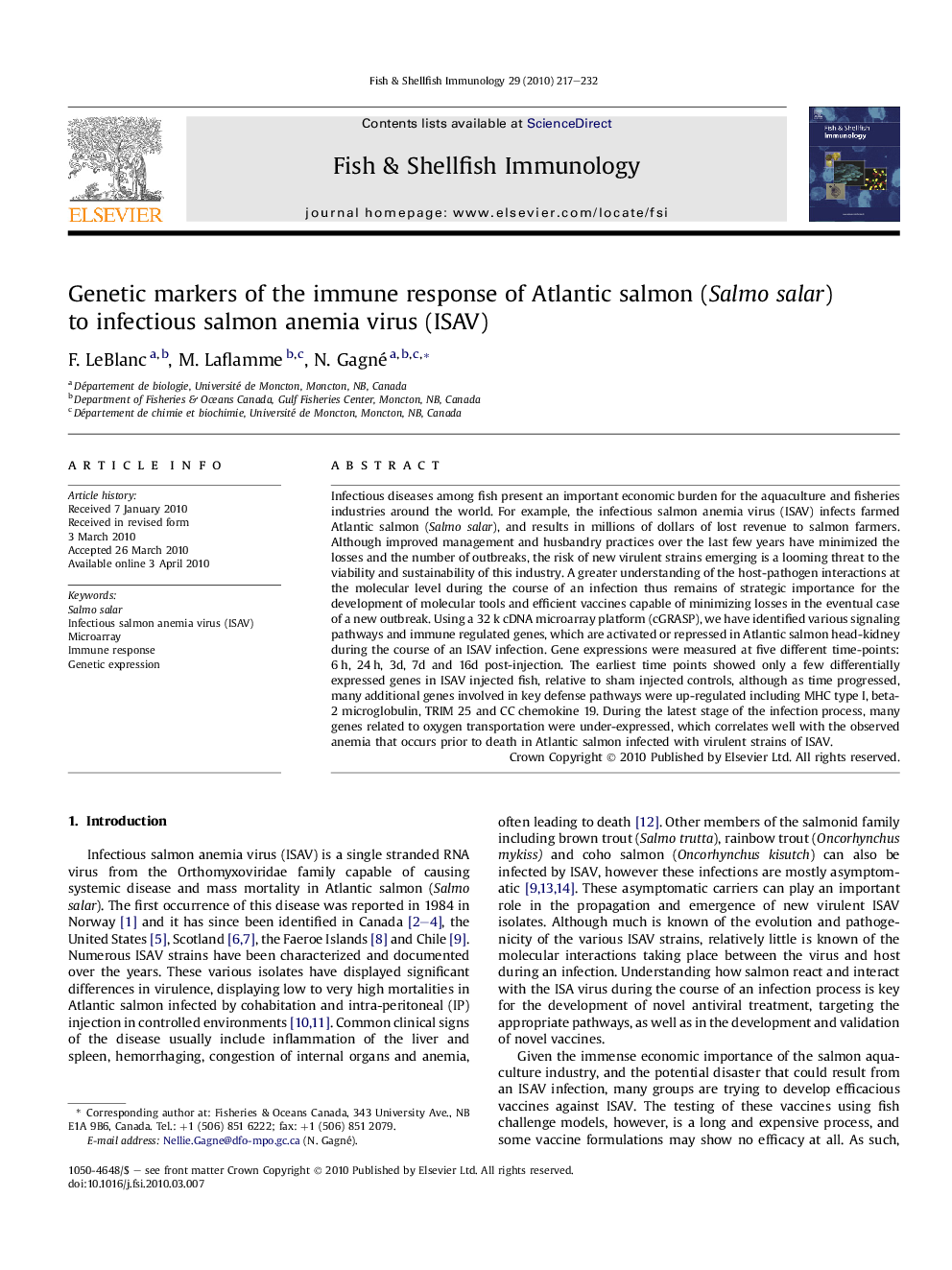| Article ID | Journal | Published Year | Pages | File Type |
|---|---|---|---|---|
| 2432857 | Fish & Shellfish Immunology | 2010 | 16 Pages |
Infectious diseases among fish present an important economic burden for the aquaculture and fisheries industries around the world. For example, the infectious salmon anemia virus (ISAV) infects farmed Atlantic salmon (Salmo salar), and results in millions of dollars of lost revenue to salmon farmers. Although improved management and husbandry practices over the last few years have minimized the losses and the number of outbreaks, the risk of new virulent strains emerging is a looming threat to the viability and sustainability of this industry. A greater understanding of the host-pathogen interactions at the molecular level during the course of an infection thus remains of strategic importance for the development of molecular tools and efficient vaccines capable of minimizing losses in the eventual case of a new outbreak. Using a 32 k cDNA microarray platform (cGRASP), we have identified various signaling pathways and immune regulated genes, which are activated or repressed in Atlantic salmon head-kidney during the course of an ISAV infection. Gene expressions were measured at five different time-points: 6 h, 24 h, 3d, 7d and 16d post-injection. The earliest time points showed only a few differentially expressed genes in ISAV injected fish, relative to sham injected controls, although as time progressed, many additional genes involved in key defense pathways were up-regulated including MHC type I, beta-2 microglobulin, TRIM 25 and CC chemokine 19. During the latest stage of the infection process, many genes related to oxygen transportation were under-expressed, which correlates well with the observed anemia that occurs prior to death in Atlantic salmon infected with virulent strains of ISAV.
